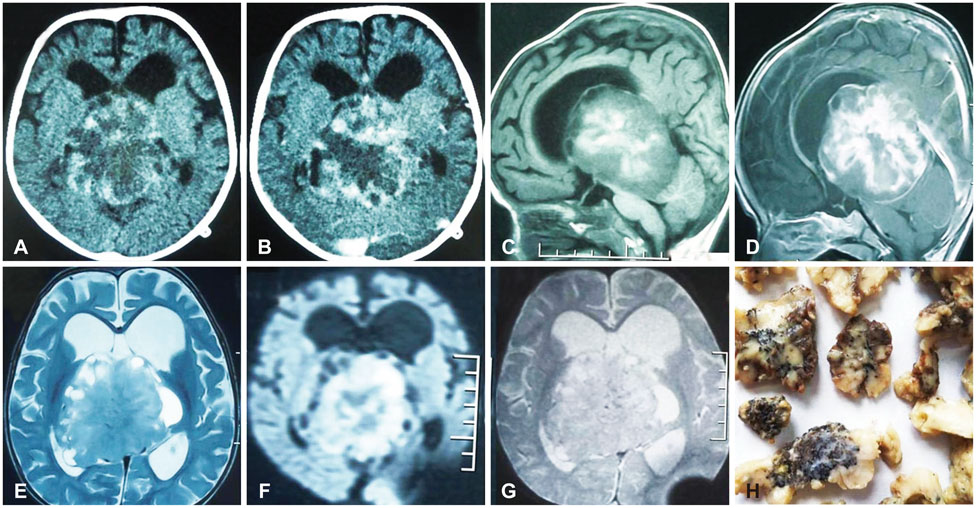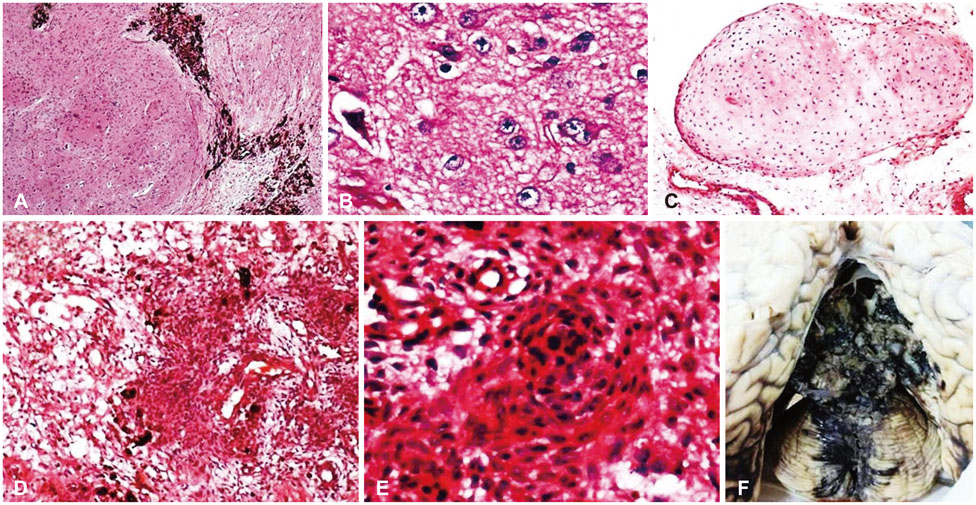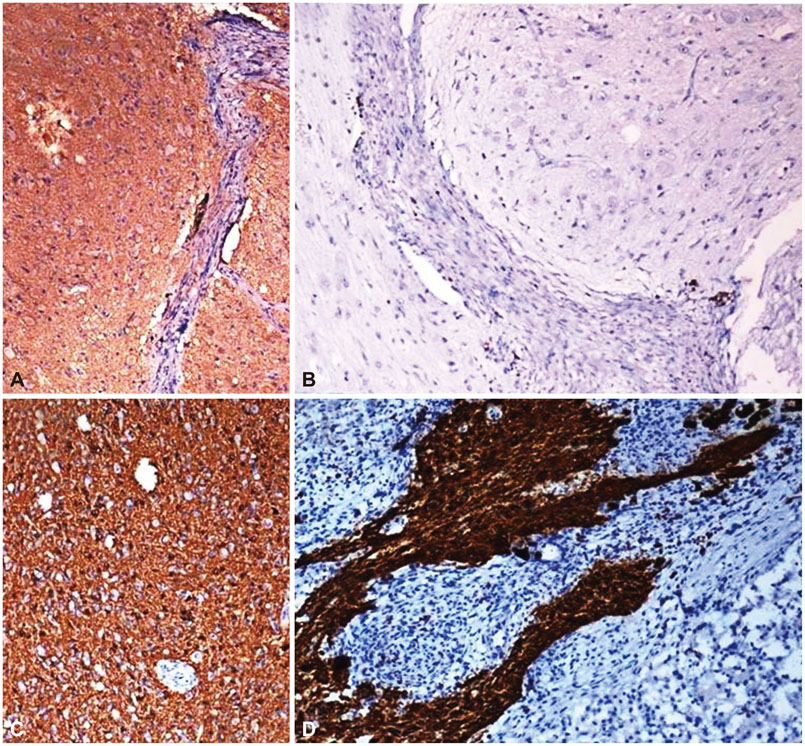Brain Tumor Res Treat.
2015 Apr;3(1):52-55. 10.14791/btrt.2015.3.1.52.
An Unusual Variant of Anlage Tumor of Pineal Region in an Infant
- Affiliations
-
- 1Department of Neurosurgery, King Edward Memorial Hospital and Seth Gordhandas Sunderdas Medical College, Mumbai, India. drraghavr@gmail.com
- 2Department of Neuropathology, King Edward Memorial Hospital and Seth Gordhandas Sunderdas Medical College, Mumbai, India.
- KMID: 1882012
- DOI: http://doi.org/10.14791/btrt.2015.3.1.52
Abstract
- A 9-month-old male child was brought with complaints of increasing head size for 2 months, increasing lethargy and vomiting for the last 2 days. Radiology revealed a heterogeneously enhancing, globular lesion in the pineal region with hydrocephalus. Near total excision of the tumor was carried out. The histopathological examination of the lesion showed heterogenous elements in the form of mature neuroepithelial and ectomesenchymal tissue. The pathology and radiology of this unusual lesion is discussed with relevant review of literature.
Keyword
MeSH Terms
Figure
Reference
-
1. Ajayi O, Palma A, Sadanand V, Deisch J. Pineal anlage tumor: case report and review of literature. JSM Neurosurg Spine. 2014; 2:1035.2. Fuller GN, Scheithauer BW. The 2007 Revised World Health Organization (WHO) Classification of Tumours of the Central Nervous System: newly codified entities. Brain Pathol. 2007; 17:304–307.
Article3. Gudinaviciene I, Pranys D, Zheng P, Kros JM. A 10-month-old boy with a large pineal tumor. Brain Pathol. 2005; 15:263–264.
Article4. Yi JW, Kim HJ, Choi YJ, et al. Successful treatment by chemotherapy of pineal parenchymal tumor with intermediate differentiation: a case report. Cancer Res Treat. 2013; 45:244–249.
Article5. Schmidbauer M, Budka H, Pilz P. Neuroepithelial and ectomesenchymal differentiation in a primitive pineal tumor ("pineal anlage tumor"). Clin Neuropathol. 1989; 8:7–10.6. Berns S, Pearl G. Review of pineal anlage tumor with divergent histology. Arch Pathol Lab Med. 2006; 130:1233–1235.
Article




